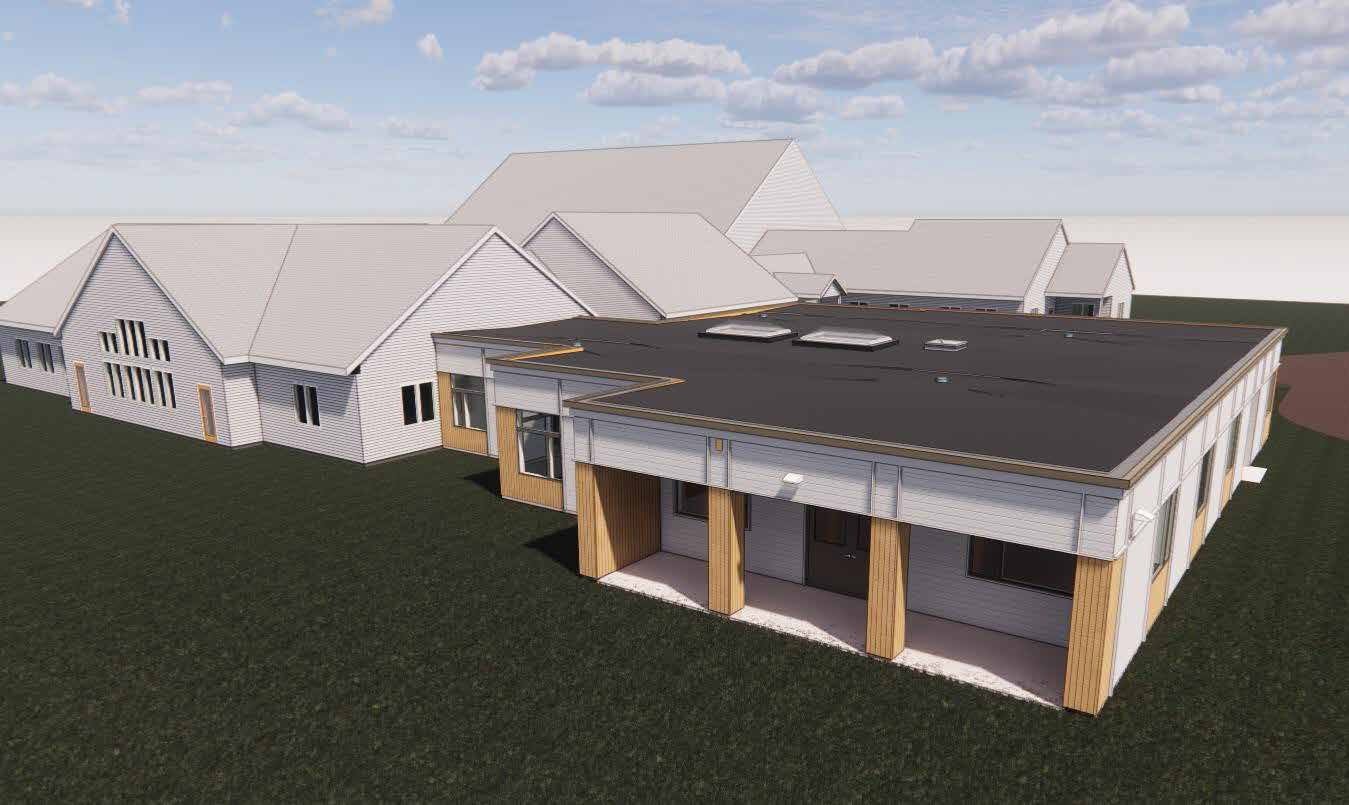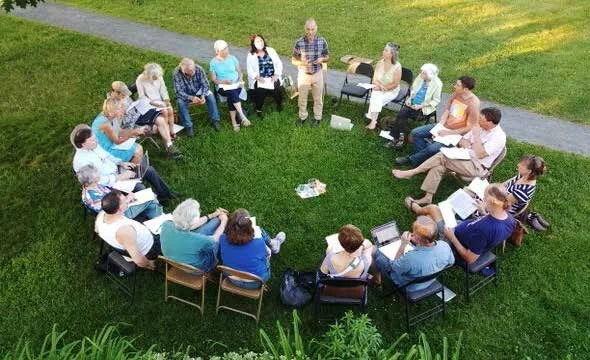Sciences Building Replaces TSA Yurts
“The fire marshal took one look at those yurts recently and said, ‘yeah, that’s not really gonna fly,’’’ said Mary Newman, head of school at The Sharon Academy, explaining the urgency of a permanent solution. The four yurts in front of the school were always intended to be temporary, but have served as classrooms since 2005. Now, after a decade-long process, TSA is replacing the yurts with a new wing focused on hands-on learning for science, shop, and art projects.
TSA was approved for a low-interest loan as part of the USDA’s rural development program this spring, enabling the project. The money will be used alongside $1.3 million in fundraising to build a 5,379-square-foot wing, adjacent to the 8,200-square-foot gym. The funds will also be used to add a gravity-fed emergency sprinkler system into the rest of the school, and expand the parking lot. According to John Roe, president of the school board, construction will likely begin in September and be completed next summer.
This new wing marks the school’s first expansion in 14 years.
“In some ways it is just finishing out the school by upgrading the science teaching capacity to modern standards,” Roe said.
The most notable feature on the new wing will be two large lab rooms enabling rich science, art, and construction projects.
The “clean” lab, as Roe calls it, will be fully fitted for chemistry and biology experiments. The “dirty” lab will be a maker space with a workshop for all kinds of hands-on projects.
A covered outdoor area will supplement the indoor workspace. Roe explained that nothing will be attached to the floor in the labs, allowing the spaces to transform and change around different purposes.
“There’s been a need for more comprehensive space to do any number of things, like build the trebuchets for physics war, or the sets for interim, or do sophisticated chemistry experiments. There’s been a need for that for a long time,” said Newman.
The wing will also feature three traditional classrooms to replace the yurts classrooms, as well as a photographic darkroom. Two of the classrooms will be soundproofed, giving students a space to practice music.
The USDA loan itself is a below-market loan with low interest and a payback period of 35 years. By refinancing existing debts, Roe says the school can take on this loan without increasing its mortgage payments.
The new wing will support TSA’s transition towards what is called a “deep learning” curriculum, which focuses on making students’ school work more relevant to their lives. It focuses on “less theoretical problems, more real problems,” explained Roe, “and in terms of the wing, students will be doing real research, or building the outdoor education frame as part of learning about science or math. It’ll be hands-on, project based, working as a team.”
Roe has been on the board for 12 years, and has worked towards this wing since he joined.
“I’m a scientist, I know a lot about science, and so this has been one of my life’s works, to improve that aspect of the school, and that’s why I’ve been working on this for years and years,” he said. His three kids have all been students at the school.
On top of the new wing, expanded lot, and sprinkler system, the proposal includes the foundation of a barn which students would build over time, a transformation of the current chemistry room into a teaching kitchen, and locker rooms built off of the gym. However, given current construction prices, Roe said it is unlikely that these additions will make it into the initial project.
While the original vision was a net-zero building, current costs have made that dream impossible, for now. The wing will run on propane heating, but will be outfitted to seamlessly transition to air-to-water heat pumps when the technology is ready, said Roe.
Click here to view published article on The Charlotte News.







